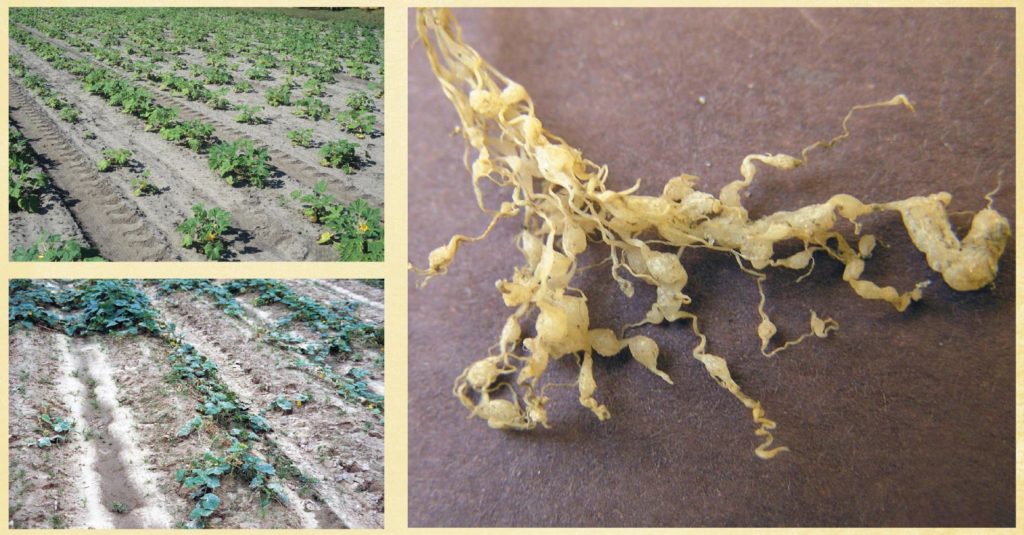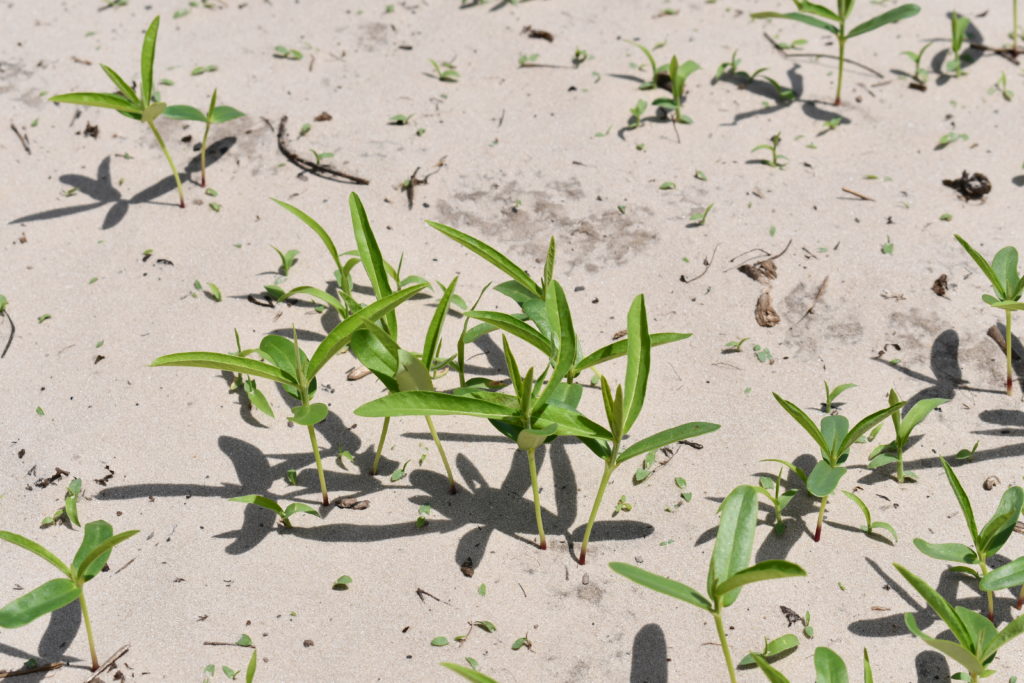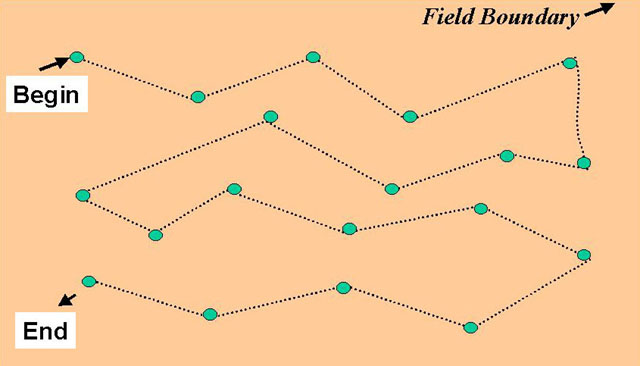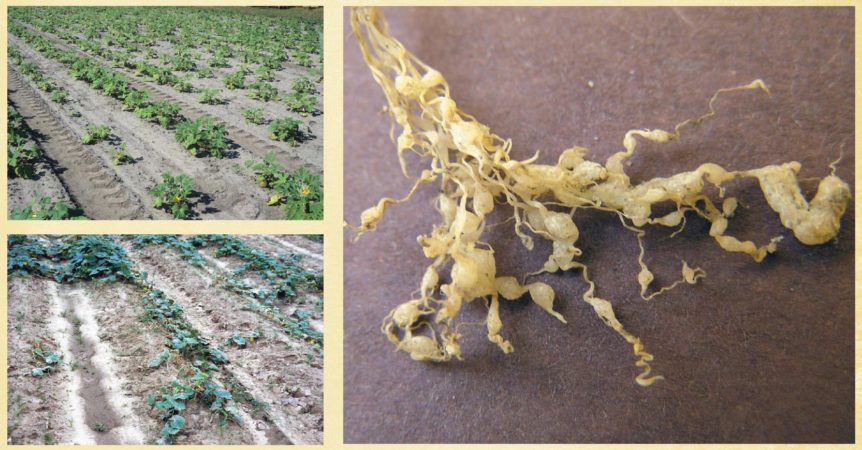
By Frank Giles
Estimates vary, but plant-parasitic nematodes take a huge bite out of global agricultural production and profits each year. An often-cited figure is that the many species of the pest cause about $125 billion worth of crop losses each year. That equates to roughly 5% of crop yield losses globally.
There are about 20,000 described species of nematodes, with more than 4,000 that damage plants. In the Southeast, nematodes can reduce yields in specialty crops. Root-knot, sting, stubby root and reniform nematodes are among the most problematic species.

According to the University of Florida Institute of Food and Agricultural Sciences (UF/IFAS), most species of plant-parasitic nematodes have a relatively simple life cycle consisting of the egg, four larval stages, and the adult male and female. Development of first-stage larvae occurs in eggs, where the first molt occurs. Second-stage larvae hatch from eggs to find and infect plant roots or, in some cases, foliar tissues.
Host-finding or movement in soil occurs within surface films of water surrounding soil particles and root surfaces. Depending on species, feeding will occur along the root surface, or in some species like root-knot, young larval stages will invade root tissue, establishing permanent feeding sites within the root.

Second-stage larvae will then molt three times to become adult males or females. For most species of nematodes, as many as 50–100 eggs are produced per female. But in some, such as root-knot, upwards of 2,000 may be produced. Under suitable environmental conditions, the eggs hatch, and new larvae emerge to complete the life cycle within four to eight weeks depending on temperature. Nematode development is generally most rapid within an optimal soil temperature range of 70–80 degrees.
Be on the Lookout
The symptoms of nematode injury on crops can be seen in the foliage and on the roots. Wilting of plants, leaf yellowing and stunted growth are common symptoms above ground. Root-knot nematodes show symptoms in the form of galls on the roots.
Often, symptoms are not uniform throughout a field due to the uneven distribution of nematodes in fields. While symptoms can be diagnosed in the crop, soil sampling is the best method to identify nematodes and which species are present. Sometimes, nematodes can reduce crop yields without showing significant visual symptoms on the plants.
“Scouting is best done on the previous crop,” says Johan Desaeger, a UF/IFAS associate professor of entomology and nematology. “Collect soil samples toward the end of the previous crop, but before plants start senescing. Send those samples to a nematode lab. Also, dig up some roots to check for root galls or any other potential nematode damage (root necrosis, stubby looking roots). When sampling for nematodes just before planting a new crop, very few plant-parasitic types will be found, as they are dormant (egg stage) or at deeper soil layers.”
Collect soil and root samples from 10 to 20 field locations using a cylindrical sampling tube or, if unavailable, a trowel or shovel. Since most species of nematodes are concentrated in the crop rooting zone, samples should be collected at a soil depth of at least 6 to 10 inches.
Plant-pathogenic nematodes can be deeply distributed throughout the soil profile well below the typical sampling depth and zones of root growth and have the capability to move upward to infest plant roots. In this scenario, samples taken from surface soil horizons may not adequately describe nematode populations and potential threats to crop growth and yield.
For practicality, sample in a regular pattern over the area, emphasizing removal of samples across rows rather than along rows. One sample should represent no more than 10 acres for relatively low-value crops and no more than 5 acres for high-value crops.
Scouts also should look for areas in fields where plants appear to be stunted or showing other symptoms of nematode infestation. Roots and soil cores should be removed to a depth of 6 to 10 inches from 10 to 20 suspect plants in those areas. Avoid dead or dying plants, since dead or decomposing roots will often harbor few nematodes.
Management Tactics
Fumigation is the most common chemical control tactic to manage nematodes. The task has become a bit more complicated since methyl bromide was phased out as a control option.
Growers can deploy non-fumigant nematicides, cultural practices, crop rotations and planting crop varieties that have some level of resistance to nematodes. Cover crops have been getting more attention in recent years as a way to help reduce nematode populations in fields. Researchers are studying how to incorporate cover crops into nematode management programs.
“We are doing quite a bit of work on cover crops for nematode management at UF/IFAS, as are many other nematode labs across the world. Before nematicides came along, cover crops (and crop rotation) were the first defense against nematodes,” Desaeger says. “All crops will benefit from the use of cover crops, especially ones that are more susceptible to nematode damage — cucurbits, tomato and strawberry, to name a few.”
No single cover crop species will control all nematodes. That’s why scouting with soil sampling is important to identify species. With that knowledge, growers can select a cover crop mix best suited to manage the nematode species present in their fields.
“Sunn hemp is good for root-knot and sting nematodes, while sorghum-sudan is good for root-knot but not for sting,” Desaeger says. “However, sunn hemp may increase lesion nematodes, so every cover crop may have one or more nematode that will fancy it. For this reason, cover crop mixtures could be a better option to broaden the spectrum of control.”
Like when trying any new input, Desaeger recommends growers do their own research to determine what works best in their fields. Local Extension agents can be a great resource in recommending good cover crop mixtures for a particular area.
“If you’re a farmer, and are not sure about what cover crops to plant, do your own experimentation,” he says. “Try some portions of your field with cover crops and others without. Try your own mixtures because every field is different. What works best in one field may not work as well in another field.”










